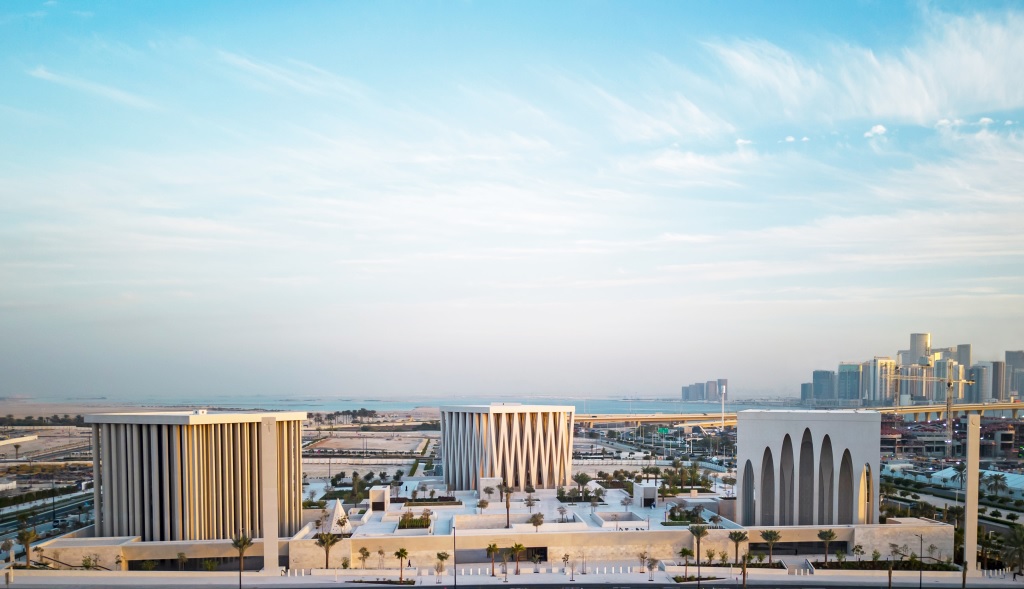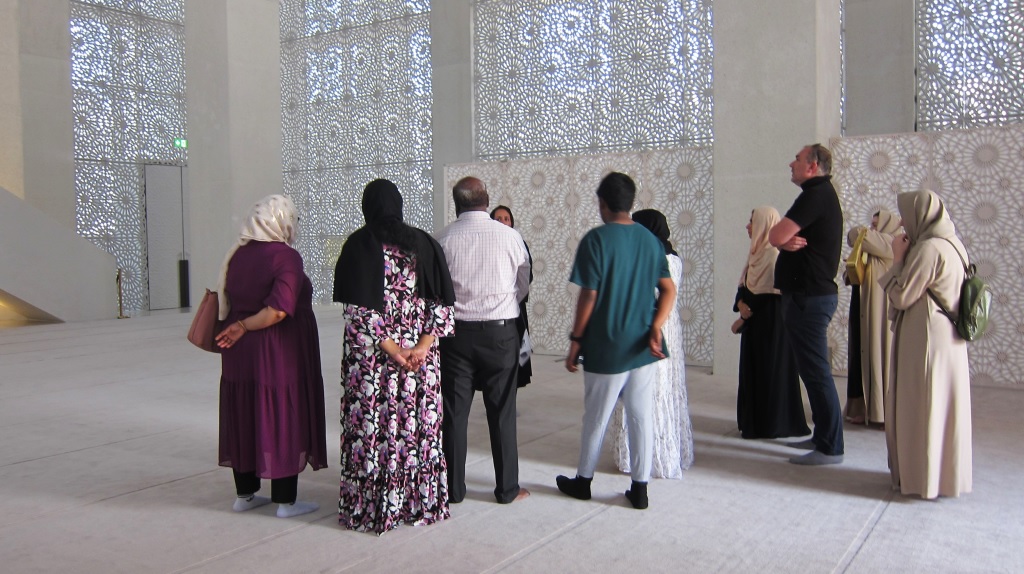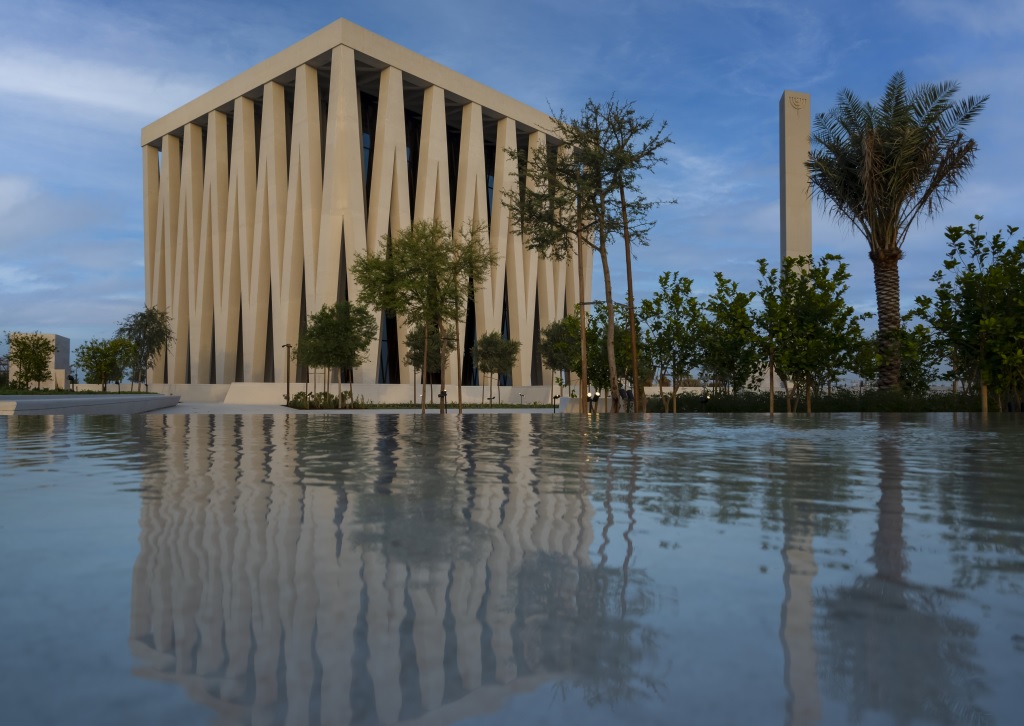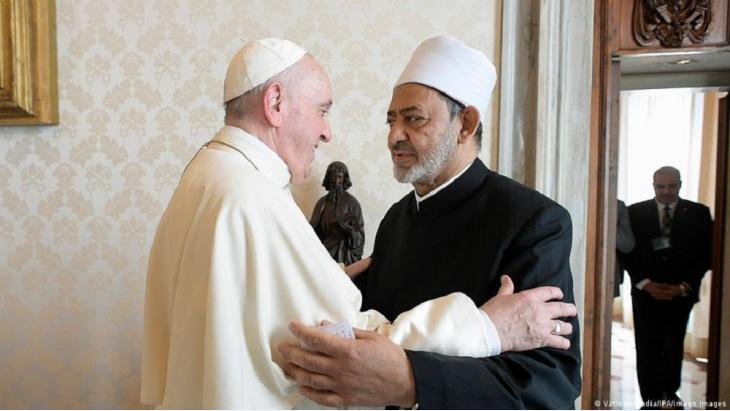Religious tolerance in UAE serves national interest

The Abrahamic Family House shines white against a cloudless blue sky. The complex with its three cuboid houses of prayer lies directly opposite the building site for the huge new Guggenheim Museum, and just 500 metres from the Louvre Abu Dhabi on Saadiyat Island.
This is Abu Dhabi's cultural district, and there is plenty of space here for the United Arab Emirates' ambitious cultural projects. It's the end of May and the temperature is over 40 degrees, the humid heat cocooning everything – no one is walking around outside if they don't have to.
The 30-by-30 metre houses of prayer stand facing each other like dice, all the same, and yet different in their architecture. They are linked by a garden, in which pomegranate and lemon trees still have some growing to do. An olive tree over 100 years old has been imported from Italy and planted there.
The interfaith complex on Saadiyat Island was designed by British-Ghanaian star architect David Adjaye. The Abrahamic Family House is not just a symbol of the links between the three major monotheistic religions, which all invoke the biblical patriarch Abraham. It is also an example of modern sacred architecture done well. Commonality and difference take physical form.

Against hate and extremism
In 2019, Pope Francis met the most senior representative of Sunni Islam in Abu Dhabi, Ahmad al-Tayeb from the al-Azhar Mosque in Cairo. They signed a document in which they declared their support for freedom of religion and condemned violence and extremism in the name of God. That was also when the interfaith Abrahamic Family House was given the go-ahead; the two men's signatures can be seen on a stone in the centre's entrance hall.
The synagogue, named after Moses ben Maimon (Maimonides), is the first Jewish house of prayer to be built in the Arab world for a hundred years. It is one of the most beautiful synagogues in the whole world, according to Rabbi Yehuda Sarna, originally from Canada, who looks after its congregation. Like the imam, he and his family live in the grounds of the Abrahamic Family House; the Catholic priest is here during the day, but lives in the city.
The synagogue's facade is a stone reference to the palms that cover the booths (Sukka) during Sukkot – the festival of booths – in remembrance of the Israelites' exodus from Egypt. The inside of the building is also designed to be reminiscent of a tent.
Radically foreign and yet familiar
As a rule, the 30 or 40 Jews who gather here for Shabbat are expats who work in the Emirates, Sarna says. He estimates the total number of Jews in Dubai at around 2000 (though there is no synagogue there), and 300 or so in Abu Dhabi. They also include a few families of Arab Jews from places like Yemen..

And he says that Jewish visitors from all over the world have already started to arrive. "In a very short space of time, the synagogue has become a significant centre for global Judaism." They come from Europe, the USA, Israel, and from other Arab countries with Jewish communities, such as Morocco and Tunisia.
By constructing this interfaith centre, the Emirates are presenting themselves as a place of dialogue between cultures and religions. And in fact, in 2022 the U.S. government's annual Report on International Religious Freedom attested to a notable tolerance in the country's society for religious minorities, in particular Jews and Christians. After years of building work, a Hindu temple for the more than three million migrants from India is also set to be consecrated in 2023.
Tolerance as soft power
But the heavy emphasis on tolerance is also designed to underscore the aims of Emirati politics. In September 2020, the UAE and Bahrain recognised the state of Israel as part of the "Abraham Accords". The agreement had been preceded by years of secret negotiations and cooperation, especially on economic matters. This change of policy also had to be communicated internally, and the Abrahamic Family House with its interfaith message was a part of that.
The country, under the authoritarian rule of Sheikh Mohammed bin Zayed al Nahyan, also wants to position itself against radical movements in Islam. Since the Arab Spring of 2011, the Emirates have vehemently opposed the Muslim Brotherhood and political Islam.
And yet there were initially some strong reservations about the interfaith centre from the Islamic side.
"Yes, there was prejudice on social media," the Egyptian imam Mahmoud Nagah Ahmed Farag Khalaf tells me. "Extremists were spreading a story that three religions were going to be mixed together into a single one in the Abrahamic Family House. Members of various religions would be praying and running the houses of prayer together." Several times, he stresses that this is completely wrong. "I always say to critics: why don't you drop in and see for yourself what we're doing here. We're a completely normal mosque community."

Interfaith dialogue without freedom of speech?
The architect, Adjaye, chose a mashrabiya structure for the mosque, a formative element of Islamic architecture. This ornate latticework is usually made of wood; here it is limestone. Sunlight slants through the outer walls into the mosque. Four pillars support the inside of the building, with nine domes arching above them.
They symbolise the caves in which the Koran was revealed to the Prophet Muhammad. The minimalist style has convinced many visitors. "This architecture is simply overwhelming," says one visitor from the USA enthusiastically.
Each community celebrates its own festivals and performs its own rituals. Communal prayer is not an option. So where is the interfaith engagement, apart from the shared outdoor space and the fact that the representatives of the three religions meet for a meal or a walk in the garden? How can open dialogue be conducted in an authoritarian surveillance state where freedom of speech is limited?
When the centre was first opened, the expert on Islam and Jesuit Felix Koerner told Cologne's Domradio that of course, one problem with this project was "that it is very much top-down, it comes from leading personalities on the state and religious side". He would therefore say that "it's a lot of desire and little success".
A new space, a new idea
"This is virgin territory," is Rabbi Sarna's opinion. "What we're creating here is a new space, a new idea." First, he says, you need to build up a lively Jewish, Christian and Islamic community. Dialogue conferences on faith topics are being planned – but the main thing is growing mutual trust.
On the Jewish as well as the Muslim side, many visitors aren't sure what to make of the centre, the rabbi tells me. "If they ask me, I always say it's the combination of radical familiarity and radical strangeness that is confusing": the familiarity of a synagogue and the strangeness of an Arab setting that Jews assume is hostile.
The rabbi himself had to struggle with his emotions for a long time when he first came to the Emirates in 2013, recognisable as a Jew by his kippa. "I had already done a lot of interfaith dialogue work in the U.S., including with Muslims, but I didn't realise how many deep-seated stereotypes about the Arab world I still had myself."
He struggled with these stereotypes on every visit to the Emirates, to the extent that it even gave him panic attacks. "I was in the supermarket once, and I was suddenly overcome by this fear: I'm a Jew alone in an Arab country. I could be killed." But over time, this fear has ebbed away and proved to be unfounded. Being appointed rabbi at the newly-opened Abrahamic Family Centre in 2022 was an overwhelming experience.
A fig leaf for authoritarian policies?
The Indian Franciscan Fr. Michael Fernandes is glad that there is another house of God for the more than two million Christians who now call the Emirates home. Abu Dhabi's two other churches are packed to the rafters during services. For the church in the interfaith complex, Adjaye worked with a wooden structure for the interior that places the cross at its centre.
"I would like groups of Christians from all over the world to come and see how we coexist together here,” he says. He sees the Abrahamic Family House as a model for interfaith engagement in other places.
You won't hear any criticism of the hosts from the representatives of the three religions. Are they being used as a fig leaf to simulate openness? It's impossible to talk about such things; during my visit to the Abrahamic Family House, two of the centre's PR people are present at all times. In the Emirates, interfaith dialogue is also a matter of national interest.
© Qantara.de 2023
Translated from the German by Ruth Martin